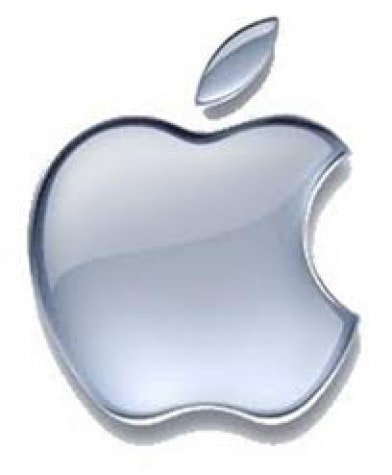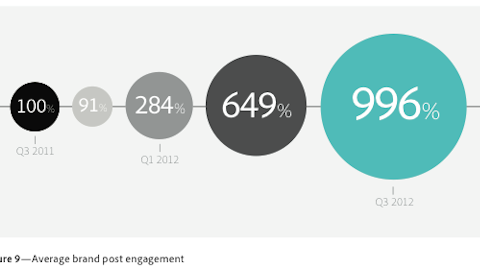Who likes cheap stocks? Raise your hands!
Naturally, you’d have to be a fool (lowercase) not to raise your hand as you read that. But trying to determine whether or not a cheap stock is a real value, is one of the hardest tasks investors face.
Thankfully by using just two of the most important metrics–return on equity and the PEG ratio–to screen for new buys, can lead you to wonderful value investments. It’s my opinion that purchasing a large portfolio of stocks with a PEG under 1, and returns on equity over 20%, will lead to market beating returns.
Here are some of the most compelling values that meet this criteria today:
Fruitless headlines
By now you’ve probably heard all of the negative headlines about Apple Inc. (NASDAQ:AAPL), particularly that it has “lost its cool” or isn’t innovating “these days.” But should these opinions really have Apple Inc. (NASDAQ:AAPL) trading at a multiple (9) befitting a slow growing utility?

In my opinion, the answer is obviously no. Apple Inc. (NASDAQ:AAPL)’s fundamentals are currently disconnected from its stock price, which could make it a tremendous value.
For instance, despite the headlines, the company is still earning a robust 33% return on equity. With a PEG ratio of just 0.49, combined with the wonderful returns on equity, Apple easily meets my value criteria.
Usually companies of Apple Inc. (NASDAQ:AAPL)’s size, with market caps in the hundreds of billions, don’t trade at such cheap valuations. This is simply because value investors scoop in before they get that cheap, because they’re visible. But with Apple, the high market cap has meant high scrutiny, everyone has an opinion on this one.
But if Apple Inc. (NASDAQ:AAPL) really deserves its P/E of 9, why are analysts still projecting growth? Apple’s PEG is only 0.49, meaning the companies projected growth rate is still nearly 20%. Analysts actually expect EPS to grow $4 per share by 2014, and with such a high return on equity Apple should report quality earnings.
Anything could happen but my opinion is that value investors will eventually warm up to Apple, once the market get’s over what Apple “is not.”
Cyclical swings
While Apple is new to rough headlines large industrial powers, like Caterpillar Inc. (NYSE:CAT) and Ford Motor Company (NYSE:F), experience them perpetually. These two companies operate in industries that are subject to constant headwinds, but they’ve weathered a lot of storms over the years.
Caterpillar Inc. (NYSE:CAT) currently earns a return on equity of 29.93, while trading at a scant PEG of 0.80. Like Apple, this value is not underneath anyone’s nose, the company has a massive market cap of nearly $46 billion.
Meanwhile, Ford Motor Company (NYSE:F) earns a staggering return on equity of 34.38% and trades a scant PEG of just 0.88.
These stocks depend on the global economy, right now they’re feeling the pinch of Europe and emerging markets in (especially China for CAT). Because of this they’re always subject to the occasional stock price dip. That’s why Caterpillar Inc. (NYSE:CAT) is trading nearly $10 below their previous 52 week high and why Ford has been stuck in the teens for years.
The six month outcome for these businesses is unclear, but they’ve shown over the decades that their stock prices tend to go up in the long-term. So own these stocks, don’t rent them.
Despite the headwinds, both companies are expecting strong growth over the next two years, so buying at these value prices might be perfect timing. I like that they sport attractive valuations, growth and they will pay you a dividend yield just under 3% to wait for the good times to roll.
In a perfect scenario, you could be buying at a lull just before a nice growth upswing, as international conditions stabilize.
Money Tree
Finally, Dollar Tree, Inc. (NASDAQ:DLTR), is a great example of why the PEG ratio is so important. On the surface, with a PE of 18, the company might not seem like a value. While Dollar Tree, Inc. (NASDAQ:DLTR)’s stock may have doubled over the past two years, but its PEG is still just 0.98.
It’s a good example of why investors needn’t be overly focused on a P/E ratio. If a stock has a P/E of 9 and a PEG ratio of 2, it’s a far worse value than Dollar Tree, because its PE is trending upward to 18. Dollar Tree’s growth rate is, at the moment, higher than its lofty P/E, which is all that matters. This companies P/E should trend lower in the future, due to growth, a very bullish sign.
Beyond the numbers, Dollar Tree’s story makes sense. This discount retailer has thrived in good markets, but also in bad ones because its thrifty prices helps penny pinched customers. That fact makes it all the more impressive that the company has earned a return on equity of 39.84% just this past year.
Unlike the other stocks we’ve named, Dollar Tree is a stable play in all market conditions, yet it’s still expected to grow in the double digits. It may not seem like a sexy business, and it may not look (on the surface) particularly cheap, but it’s a classic Warren Buffett type stock, a great business at a fair price.
I think the Dollar Tree would work well with the other stocks mentioned, as a calming influence. You know what you’re going to get with it, and it carries very little headline risk.
Keeping it simple
I like these metrics, because they get to the heart of what makes for quality investments and quality stocks. PEG is not a perfect metric because it relies on growth estimates, but it’s still the most practical way to measure value relative to growth. Return on equity, like return on capital, is an essential metric as it shows investors how profitable a business is, and sheds like on the quality of a businesses earnings.
These metrics combine both Peter Lynch’s PEG ratio with elements of Joel Greenblatt’s magic formula. They’re widely available, easy to understand, and if used regularly, should lead you to good stocks.
Adem Tahiri owns shares of Apple. The Motley Fool recommends Apple and Ford. The Motley Fool owns shares of Apple and Ford.
The article Pick Great Value Stocks With 2 Easy Steps originally appeared on Fool.com and is written by Adem Tahiri.
Adem is a member of The Motley Fool Blog Network — entries represent the personal opinion of the blogger and are not formally edited.
Copyright © 1995 – 2013 The Motley Fool, LLC. All rights reserved. The Motley Fool has a disclosure policy.






